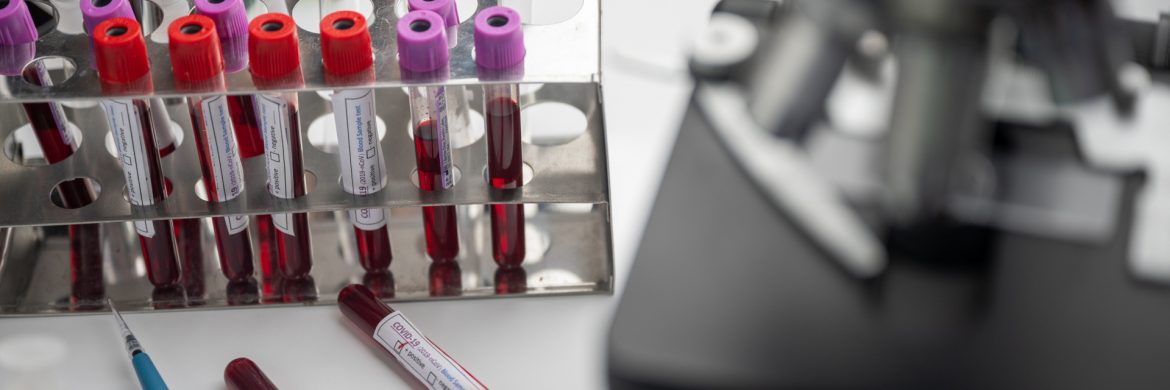Good news. On July 20th, The Lancet published two papers online at the same time, revealing the results of clinical trials for two COVID-19 vaccines. From China and the United Kingdom respectively, the two stars on the track of adenovirus vector vaccine display a one-on-one competition.
What are the similarities and differences between the two vaccines in terms of clinical trial design and results despite that they have taken the same R&D approach? What are the characteristics of Chinese vaccines’ R&D? How to perceive the potential of Oxford’s vaccine?
Two-dose Protection or Single-dose immunity, which is more effective?
Led by Chen Wei, academician at China Academy of Engineering and researcher at Academy of Military Medical Sciences, Ad5-nCoV is the first COVID-19 vaccine around the globe to enter Phase II clinical trial. The most important feature of the trial is that eligible participants over 60 years old are involved, consisting 13% of the 508 total participants.
CanSino Biologics Inc. (CanSinoBIO) is in partnership with Chen’s team regarding vaccine development. The President of CanSinoBIO, Yu Xuefeng, interviewed by Science and Technology Daily, noted, “From the perspective of trial design, the two trials share the same mechanism, namely inducing balanced humoral and cellular immune responses. There are also differences. We hope that a single-dose can be effective in the time of pandemic whereas the Oxford team further testes a ‘two-dose’ protection.”
According to news from Oxford website, Professor Andrew Pollard, head of the Oxford Vaccine Group, said, “We saw the strongest immune response in the 10 participants who received two doses of the vaccine, indicating that this might be a good strategy for vaccination.”
Yu held a different view. He thought that the “fastest would be a single-dose injection” under the trend of the pandemic. The result of Chinese Vaccine’s Phase II clinical trial showed that 95% of the participants in the high-dose group and 91% in the low-dose group showed either cellular or humoral immune responses at day 28 after vaccination.”This means that single-dose vaccine not only takes effect quickly, but also has potential to be effective of vaccination.” One thing to note is that the elderly participants have a higher tolerability for the vaccine whereas they also display a lower level of immune response.
Chen’s idea is widely quoted by the media. Once infected by the virus, the elderly are faced with high risks of severe diseases or even death. Therefore, they are an important target population for the COVID-19 vaccine. Yu pointed out that with an additional dose, the immune response will be effectively intensified. The effect of two-dose vaccination was demonstrated in the clinical trial for the Ebola vaccine developed by CanSinoBIO with the same technology. For clinical trials in the future, how to achieve better protection for the elderly can be explored.
Chimpanzees or human being, which vector is safer?
Except for their efficacy, what about the safety of the two vaccines? The AZD1222 vaccine by Oxford and AstraZeneca combines a weakened version of a common cold virus (adenovirus) that causes infections in chimpanzees and the genetic material of the SARS-CoV-2 virus.
According to Yu, Ad5-nCoV uses adenovirus type 5 as vector, a weakened version of common adenovirus that can result in the infection of human beings rather than chimpanzees. “Although some participants may have ‘existing immunity’ due to their infection of adenovirus type 5 and impact the immune response, Ad5-nCoV ensures safety to the greatest extent from the source of the adenovirus vector.”
Currently, the two vaccines are almost equally safe in terms of “safety evaluation” observed by public information from the media. Andrew Pollard and colleagues report their phase 1/2 randomized trial of one injection of chimpanzee adenovirus-vectored COVID-19 vaccine. Local and systemic adverse events such as fatigue, headache, and local tenderness occurred commonly in COVID-19 vaccines, but were tolerable and mostly ameliorated by paracetamol. No serious adverse events occurred.
Chen and colleagues reported results from a phase 2 randomized trial of single-dose immunization schedule of Ad5-vectored COVID-19 vaccine. Most injection site and systemic solicited reactions from the participants in China were mild or moderate. Adverse reactions occurred in this study includes fever, fatigue, headache, and injection site pain.
According to the comment article written by Professor Naor Bar-Zeev and Professor William J Moss, “Overall, the results of both trials are broadly similar and promising, notwithstanding differences in the vector, in the geographical locations of the populations studied, and the neutralization assays used. These COVID-19 vaccine trials are small, so inferential caution is warranted, but the explorations are laudable. Ethnic diversity in both these trials was very limited.”
“Equal Global Access to COVID-19 Vaccine”: China and UK’s Common Goal and Commitment
“It is good news,” Dr. Mike Ryan, Executive Director of the WHO’s emergencies program, said at a press conference at the organization’s Geneva headquarters shortly after the data was published in The Lancet. “In generating T-cell responses and generating neutralizing antibodies, this is a positive result. But again, there is a long way to go. We now need to move into larger-scale real-world trials.” He noted that once one of the vaccines is proven effective, the next challenge will be ensuring that there are enough doses to distribute globally.
“CanSinoBIO has always been in a strategic partnership with Academician Chen’s research team and the Oxford University research team respectively. However, CanSinoBIO chose to cooperate with Chen’s research team in the early stage of COVID-19 vaccine development,” Yu said. “But it is undeniable that the cooperation between the Oxford team and AstraZeneca has potential advantages in the recruitment of volunteers for the Phase III clinical trial.”
Although the vaccine developed by Oxford team still lags behind CanSinoBIO, regarding the level of adenovirus vaccine production line, its developing progress is expected to be “accelerated” with the aid of huge funding and the support of the global vaccine distribution network, and eventually achieve large-scale production after the results of its Phase III clinical trial are revealed.

